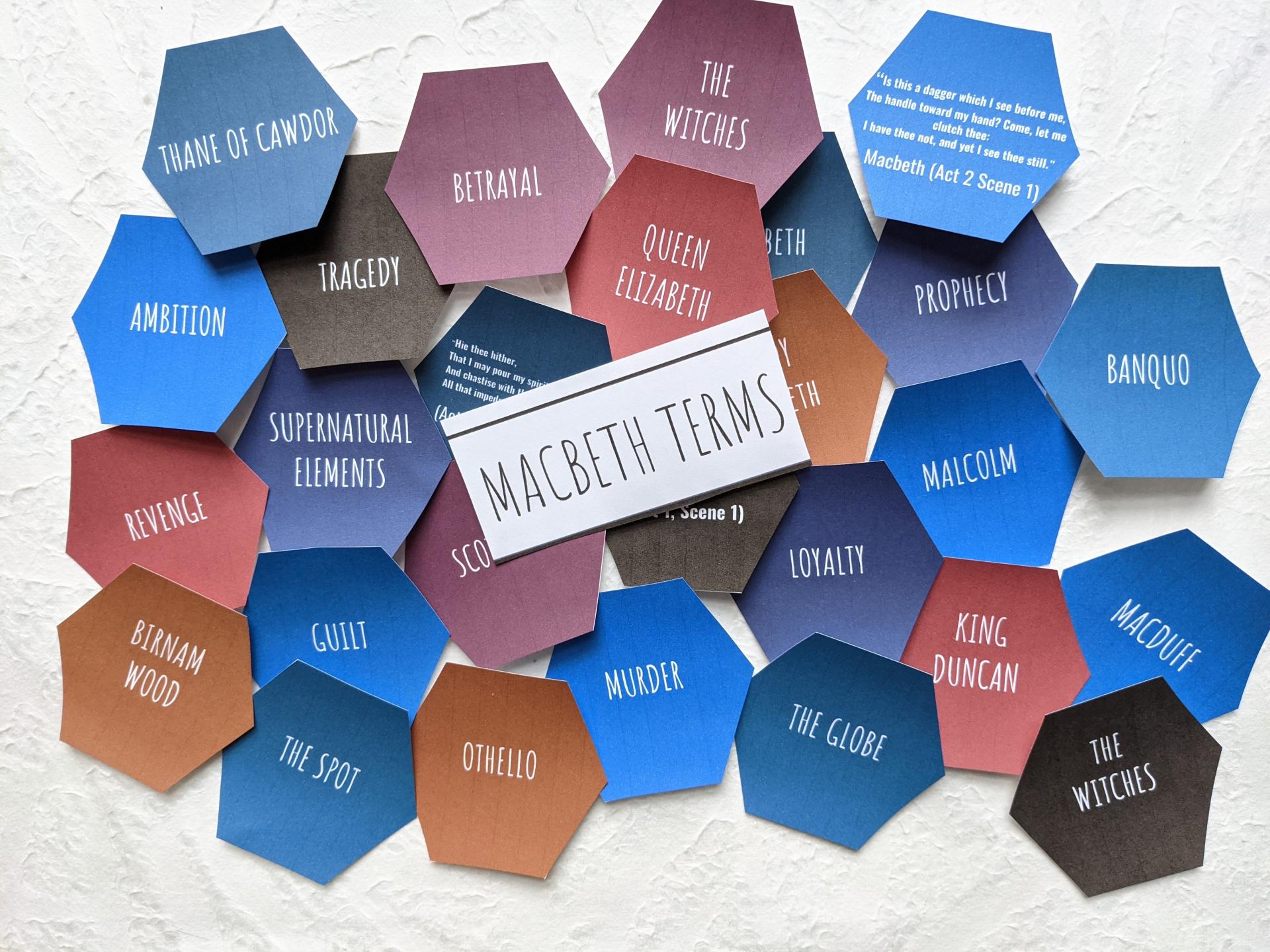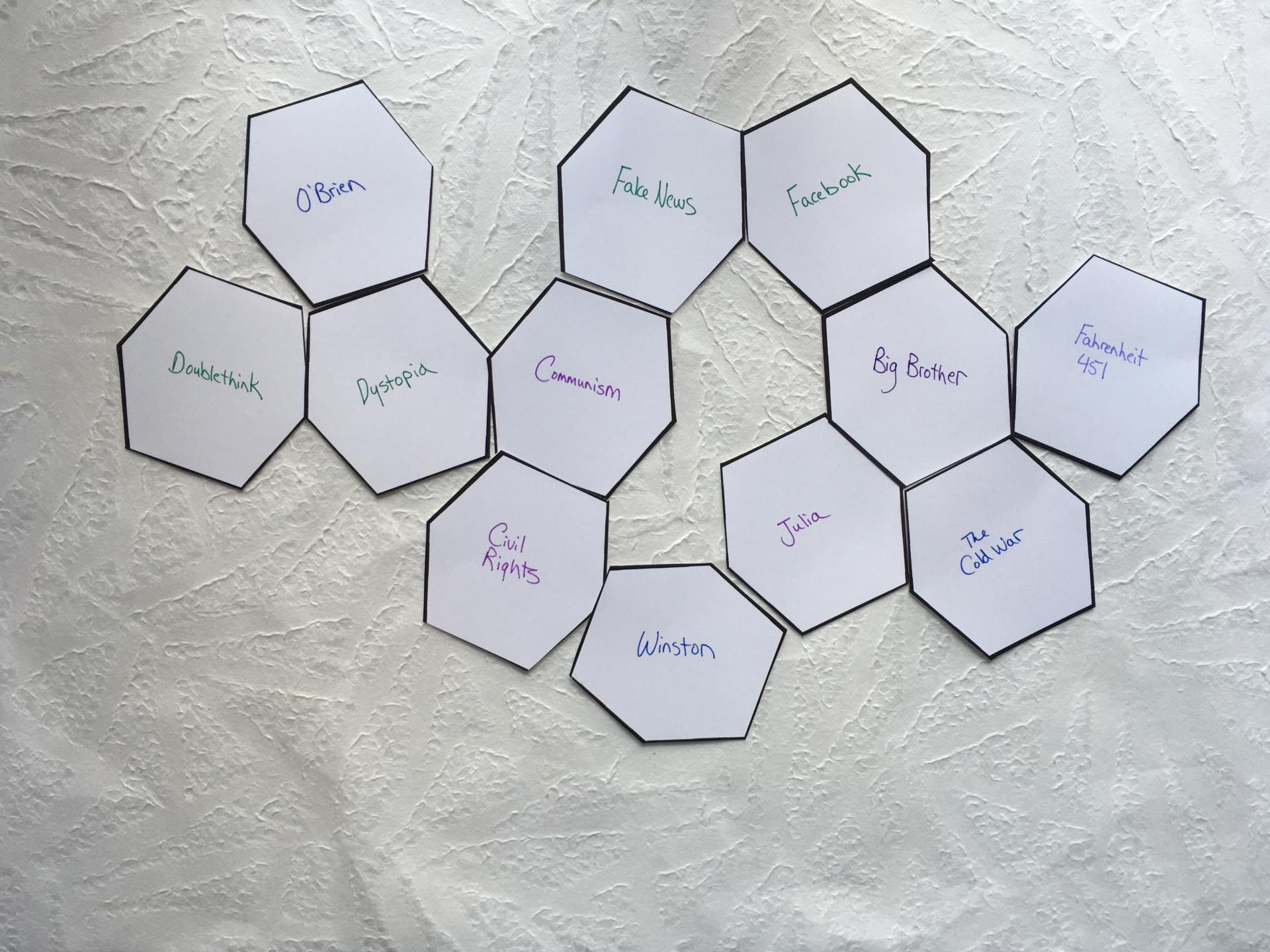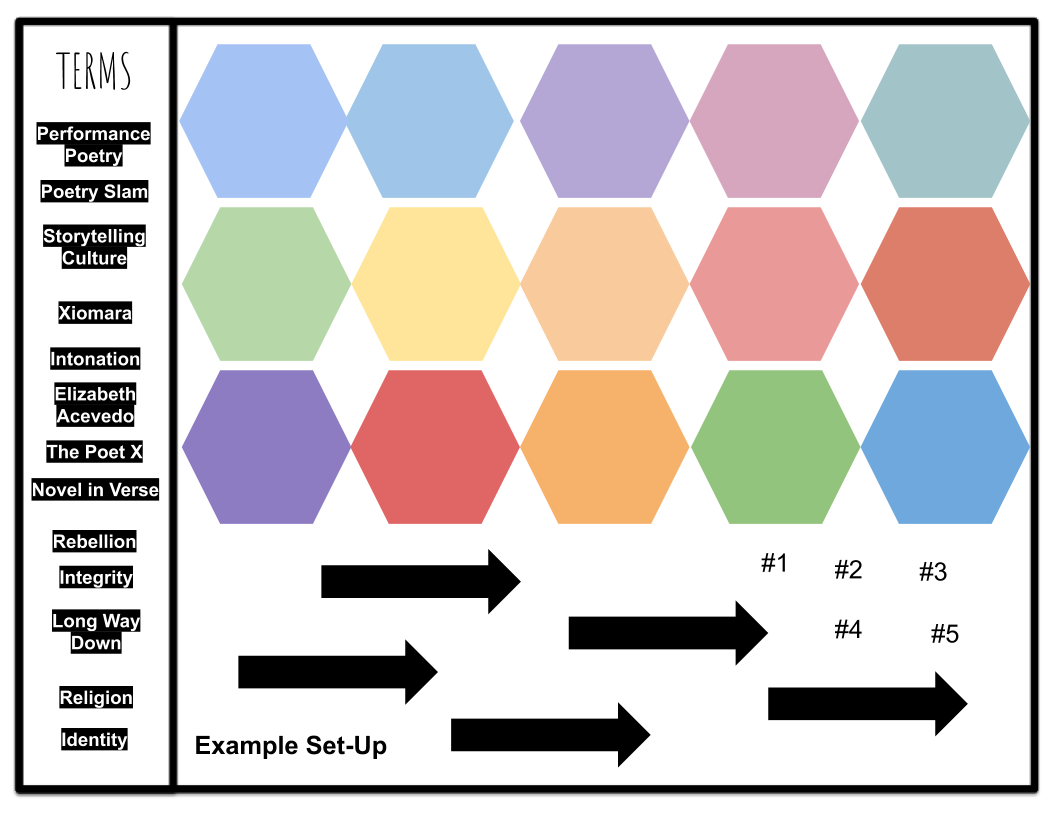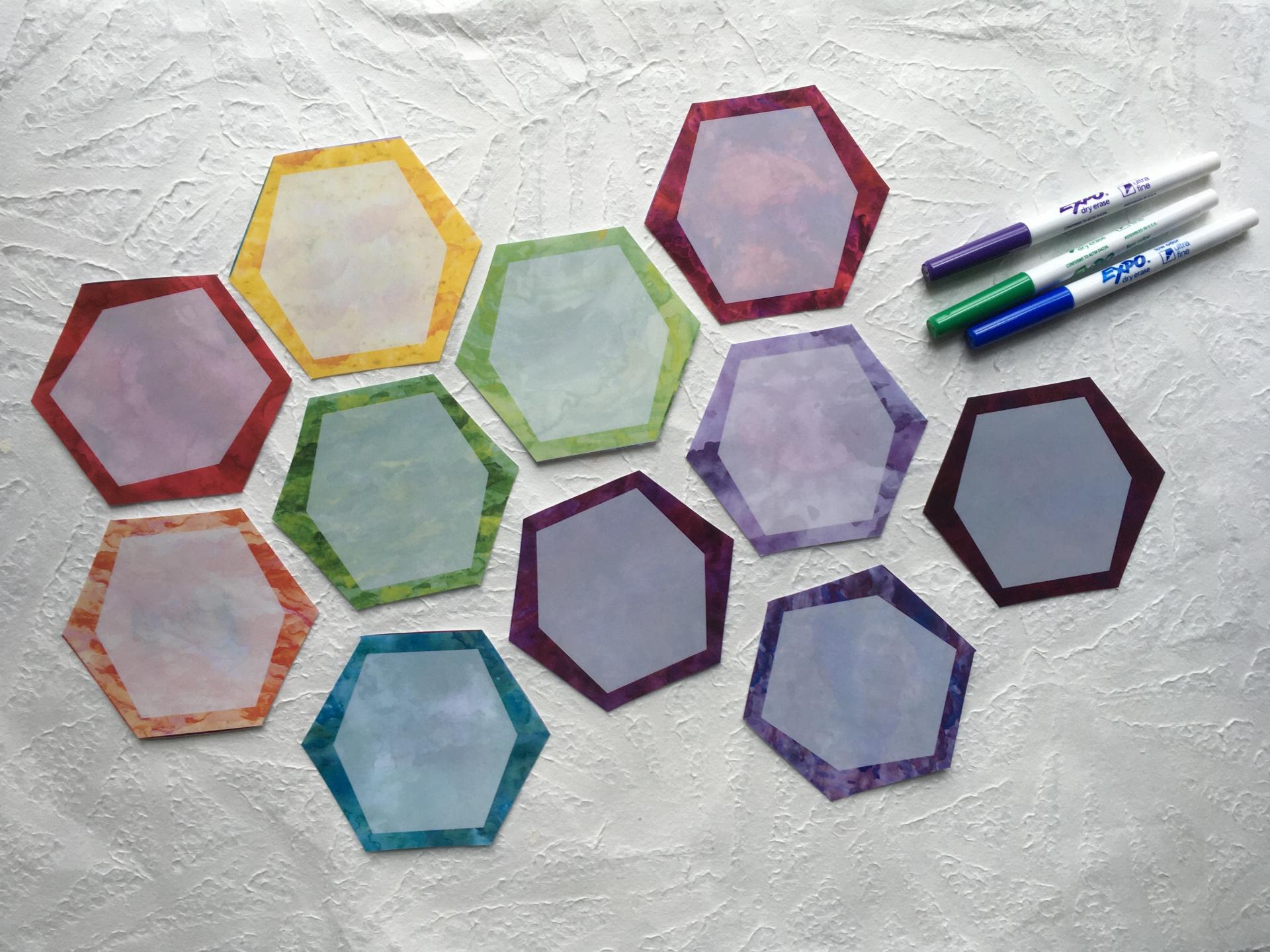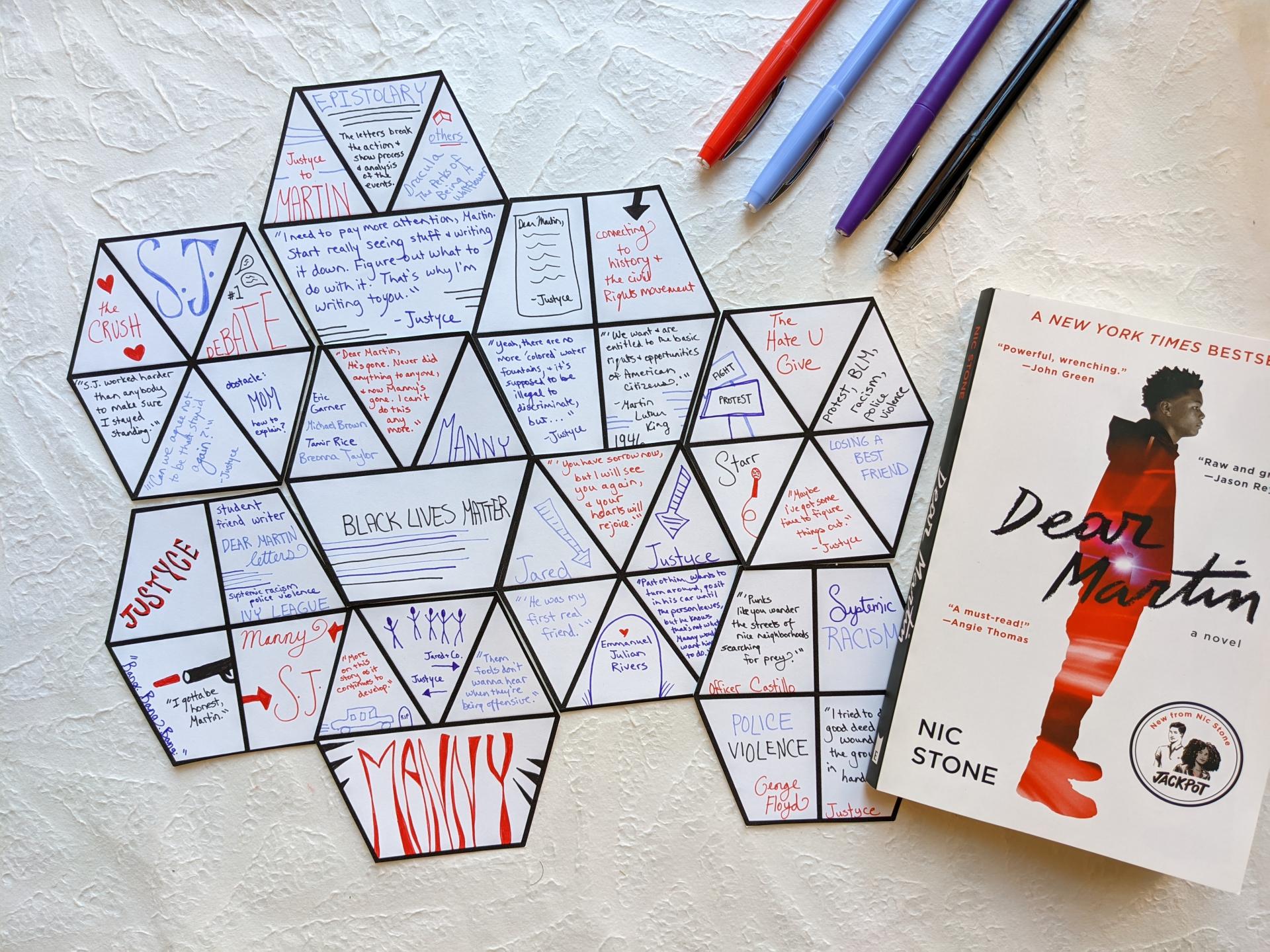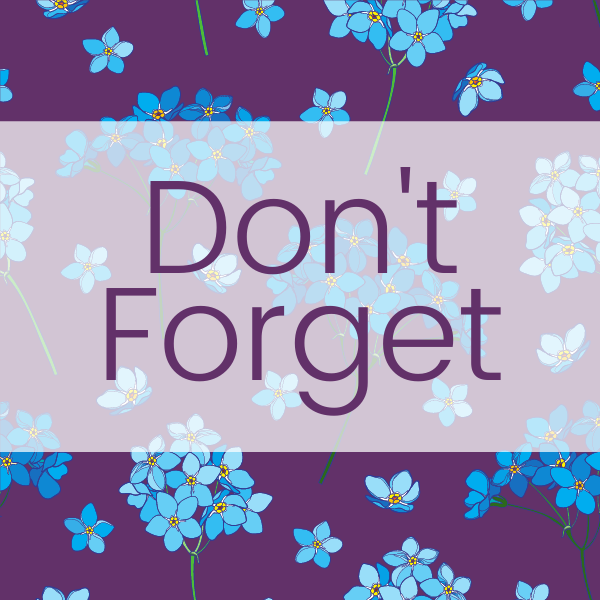
WELCOME TO DAY TWO
OF CAMP CREATIVE
Today we're talking about how to create hexagonal thinking decks.
You're going to want at least twenty terms and ideas on your first deck, but you could have many more.
Let's start by talking about what types of terms and ideas will help ignite good discussion, and then we'll talk about ways to put those terms and ideas onto your decks.
Finally, today is a pretty epic day for resources! Be sure you grab your copies of all the different types of decks at the bottom!
